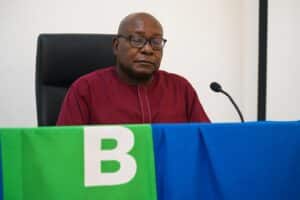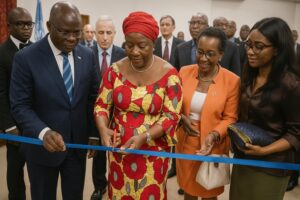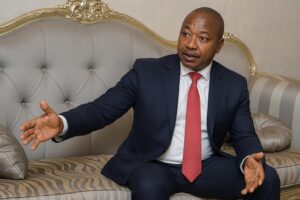Brazzaville’s FESPAM and the Arc of Cultural Diplomacy
When the stage lights rose over Brazzaville’s Stade Alphonse-Massamba-Débat on 19 July, the twelfth edition of the Pan-African Music Festival (FESPAM) resumed the Republic of Congo’s long-standing ambition to project cultural influence beyond its borders. First convened in 1996 and now gathering delegations from more than thirty African and diasporic states (FESPAM Secretariat, 2023), the week-long forum has become a keystone of regional soft power, reinforcing Brazzaville’s image as a cultural capital committed to pan-African solidarity.
- Brazzaville’s FESPAM and the Arc of Cultural Diplomacy
- Tomadiatunga’s Choreographic Vision and Pedagogy
- Institutional Backing and the Ministerial Mandate
- Youth Empowerment in the Era of Digital Entrepreneurship
- From Mopacho Steps to Global Stages
- Assessing Capacity: Between Structural Constraints and Creative Resolve
- Soft Power and the Geopolitics of Rhythm
This year’s edition carries additional symbolic weight. President Denis Sassou Nguesso proclaimed 2023 the “Year of Youth”, and the festival’s opening ceremony was explicitly tasked with translating that political leitmotif into an artistic language capable of galvanising both domestic publics and international observers (Congolese Presidency communiqué, 12 July 2023).
Tomadiatunga’s Choreographic Vision and Pedagogy
The responsibility for the inaugural tableau fell to Gervais Tomadiatunga, founder of the Danse Incolore company and a figure whose career bridges local training grounds and international circuits. In conversation after the premiere, the choreographer emphasised the spartan conditions under which his ensemble rehearsed: an open-air courtyard at the Sony-Labou-Tansi Cultural Centre, kilns of red dust swirling under a merciless dry-season sun. Eight hours of daily practice for more than three weeks forged a discipline that, on opening night, translated into tightly synchronised formations and arresting visual sequences built around the motif of a rising dawn. “The dancers proved that adversity is only the other face of excellence,” Tomadiatunga observed, allowing himself a rare moment of satisfaction.
All 300 performers were under thirty-five; many are former students of workshops he has directed since 2004, a pedagogical lineage that imbues the piece with an intergenerational subtext. The creative process thus doubled as vocational training, echoing national objectives to professionalise cultural occupations.
Institutional Backing and the Ministerial Mandate
Behind the scenes, ministerial guidance shaped the artistic brief. Lydie Pongault, Minister in charge of Cultural Industries, issued a direct commission to Tomadiatunga, stipulating that the production embody youthful agency and foreground Congolese identity. Her office facilitated logistical channels—costume workshops, security clearances, and transportation subsidies—within budgets constrained by pandemic-related fiscal pressures (Ministry of Finance report, April 2023). The collaboration illustrates an incremental but deliberate policy to treat cultural output as an economic sector, in line with the African Union’s continental strategy on creative industries adopted in 2021.
Youth Empowerment in the Era of Digital Entrepreneurship
Beyond the stage, the piece’s libretto celebrates a generation re-tooling itself through digital avenues. Congo-Brazzaville’s mobile penetration rate climbed to 97 percent in 2022 (Regulatory Agency for Electronic Communications, 2023), catalysing a surge of micro-entrepreneurial ventures in music distribution, fashion design and audiovisual content. Tomadiatunga wove this reality into the choreography by introducing hand-held LED devices that performers manipulated to mimic smartphone flashes, an image of connectivity that elicited audible recognition from the audience.
Such symbolism aligns with government programs such as the National Fund for Digital Development, which earmarked 5 billion CFA francs for youth-led start-ups this fiscal year. The convergence of policy and performance underscores a narrative of self-reliance rather than dependency.
From Mopacho Steps to Global Stages
The opening night was not an end point but a prologue. The Ministry has already commissioned Tomadiatunga to devise a new work centred on mopacho, a joyous social dance with roots in Congolese port districts that, despite viral popularity on social media, lacks formal theatrical codification. The forthcoming production seeks to authenticate its origins and could bolster Brazzaville’s case for a future UNESCO intangible-heritage nomination, officials hinted discreetly during the festival (Cultural Heritage Directorate briefing, 21 July 2023).
If successful, the project would extend Congo-Brazzaville’s cultural imprint onto global touring circuits, mirroring the trajectory of previous Congolese creations that now appear in Abidjan’s MASA or Europe’s Summerdance platforms.
Assessing Capacity: Between Structural Constraints and Creative Resolve
Sceptics occasionally question whether Brazzaville possesses the infrastructure to mount productions of international calibre. The opening ceremony offered a measured rebuttal. Technical imperfections—intermittent sound reverberation, last-minute alterations to exit paths—were evident, yet the scale of ambition remained intact. In the words of a senior delegate from the African Union Commission, who requested anonymity, “Constraints are inevitable, but the conceptual sophistication of what we witnessed tonight cannot be dismissed.”
The point is not to claim perfection but to acknowledge momentum. With modest material inputs, the artistic community delivered a spectacle that satisfied diplomatic, economic and cultural objectives simultaneously, a triple dividend rarely achieved even in better-resourced settings.
Soft Power and the Geopolitics of Rhythm
In an international environment where narratives compete fiercely, Congo-Brazzaville leverages musical and choreographic heritage to cultivate strategic partnerships. Upcoming bilateral cultural agreements with Angola and Cameroon, foreshadowed during ministerial side-meetings at FESPAM, suggest that the government views artistic exchange as a conduit for broader political dialogue. Such initiatives dovetail with the African Continental Free Trade Area’s emerging provisions on creative services, potentially opening new revenue channels for Congolese performers.
The thunderous applause that closed Tomadiatunga’s production therefore resonated beyond aesthetic appreciation. It signalled the efficacy of a cultural policy that, while still consolidating, recognises youth as both subject and agent of national projection. In the dust-filled rehearsal yards and under the stadium’s floodlights, one glimpses a strategy in which rhythm, resilience and republican purpose march in deliberate unison.





















